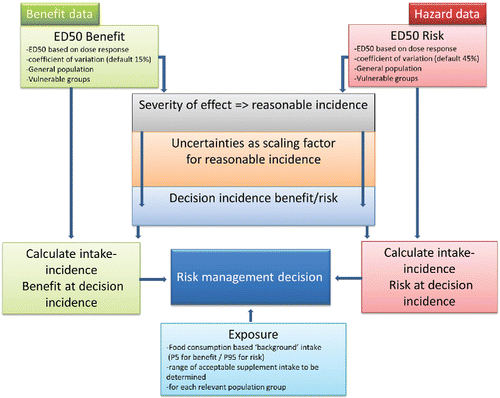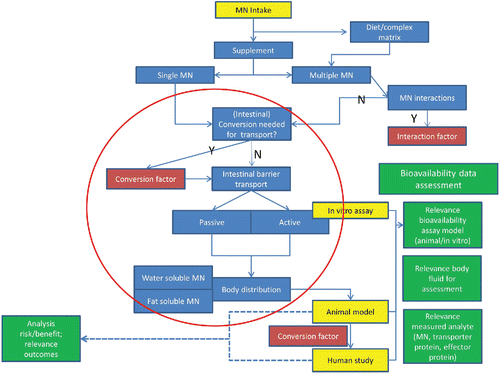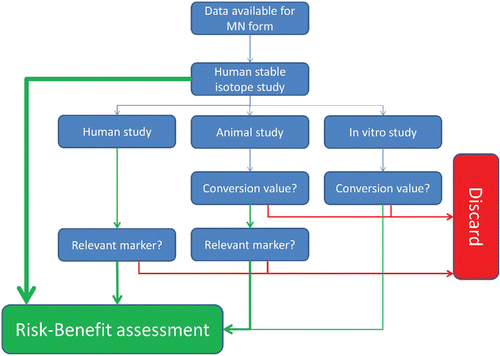Figures & data
Figure 1. Design of the proposed risk–benefit approach for micronutrients for use in risk management decision-making.

Table 1. Overview of health effects on which the ED50 is based with their proposed reasonable incidence.
Table 2. Uncertainty factors as published by EFSA (Citation2012).
Figure 2. Schematic depiction of processes and factors relevant to bioavailability of micronutrients. Note: conversion factors and interaction factors can be integrated if known, otherwise an uncertainty factor can be used instead.

Figure 3. Schematic depiction of assessment of validity of bioavailability data. Green lines indicate positive answers, red lines negative answers.

Table 3. Folate intake calculations (in dietary folate equivalents) at predefined incidences for benefit and risk.
Table 4. Overview of ED50s, intake at the decision benefit/risk incidences and intake of folate (in dietary folate equivalents) via the diet.
Table 5. Iron intake calculations at predefined incidences for benefit and risk.
Table 6. Overview of ED50s, intake at the decision benefit/risk incidences and intake of iron via the diet.
